|
UFO FILES:
Texas’ Roswell
The History
Channel, Sunday, 26th February, 2006
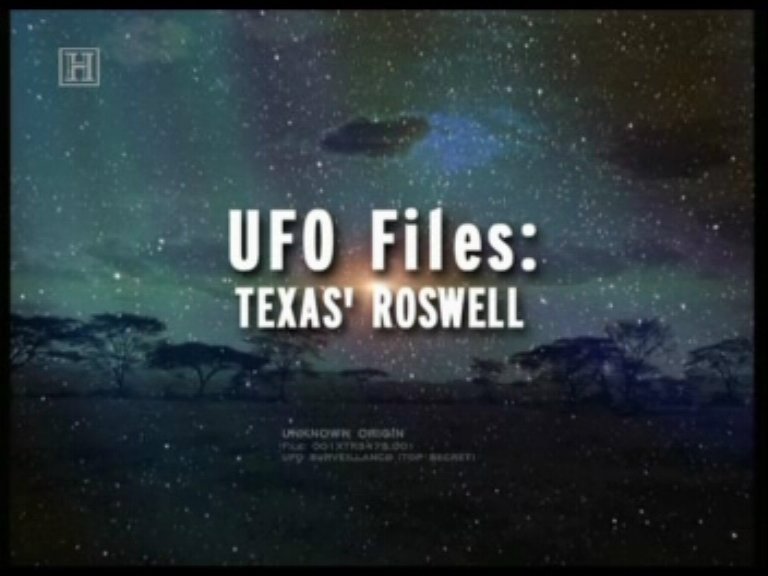
The History
Channel’s series, UFO Files, has done Britain’s Roswell,
Mexico’s Roswell and now Texas’ Roswell. I wonder if they’ll
get round to doing Roswell’s Roswell?
This was another
extremely interesting program about, much like the Mexico’s Roswell
show, an almost unknown UFO crash story. Despite it being relatively
unknown, the incident was made into a movie in 1986, entitled The
Aurora
Encounter
(no, I’ve not seen it either!). What marks this story apart, though, is
that this account of a UFO crash and recovery of an alien corpse dates
from 1897, fifty years before the ‘modern’ age of ufology began.
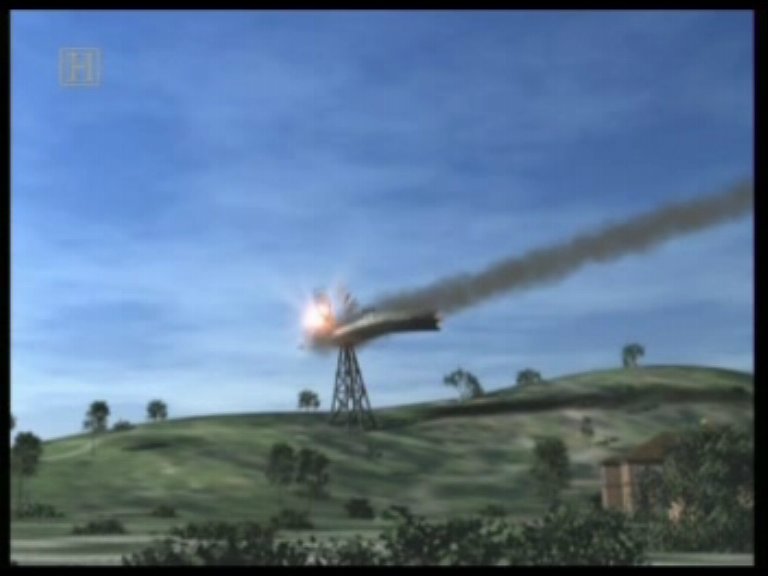 On 17th April, 1897,
what was described as an ‘airship’ was seen in skies above the small town
of Aurora, Texas. According to newspaper reports at the time, it was
described as silver and cigar-shaped. At about 6am, it struck a windmill
tower on land owned by a local judge and exploded, sending debris flying
in all directions. On 17th April, 1897,
what was described as an ‘airship’ was seen in skies above the small town
of Aurora, Texas. According to newspaper reports at the time, it was
described as silver and cigar-shaped. At about 6am, it struck a windmill
tower on land owned by a local judge and exploded, sending debris flying
in all directions.
The object had
been sighted flying over Texas earlier, but when it reached Aurora, it was
lower than it had ever been and trailing smoke. Judge J.S. Proctor’s
flower garden was destroyed – a tragedy to be sure! Locals raced to the
site and found debris scattered over several acres. They also found a body
that was described as being small in stature, almost child-like, and not
of this world.
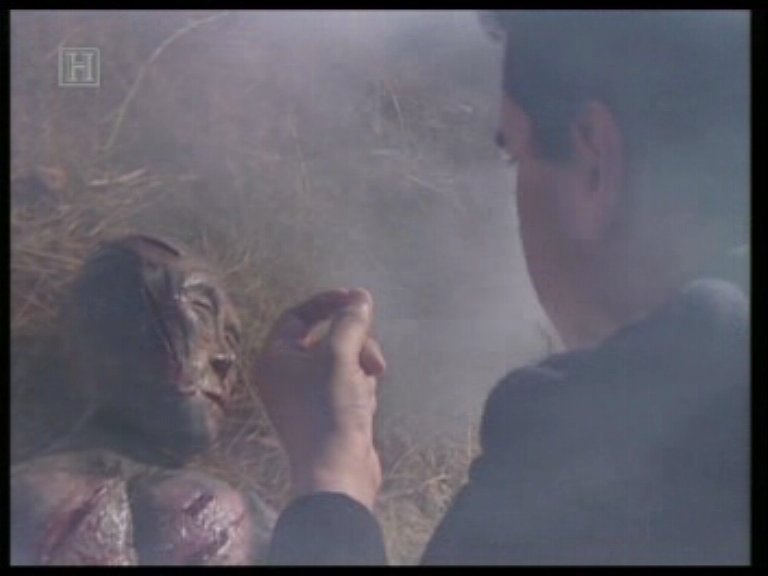 A
local US Army officer, T.J. Weems, described as an authority on astronomy,
gave his opinion that the pilot of the craft was from the planet Mars. The
alien was given a decent, Christian burial in the local cemetery beneath a
small gravestone and fragments of the craft were collected up and tossed
down the well on Judge Proctor’s land. A
local US Army officer, T.J. Weems, described as an authority on astronomy,
gave his opinion that the pilot of the craft was from the planet Mars. The
alien was given a decent, Christian burial in the local cemetery beneath a
small gravestone and fragments of the craft were collected up and tossed
down the well on Judge Proctor’s land.
As far as the
townsfolk of Aurora were concerned, that was the end of the story and it
soon became part of local myth, with some believing that it never happened
in the first place.
When Wallace O.
Chariton, author of The Great Texas Airship Mystery, began
researching the case, he expected it to be big news at the time, but was
surprised to find the story buried inside the Dallas Morning News on page
five. In fact, in that particular edition, some two days after the Aurora
incident, there were at least sixteen ‘airship’ reports.
From late in
1896, ‘airships’ were reported in over twenty US states and from April to
May of 1897, there were reports from over thirty counties in Texas alone.
These craft were reported as travelling at hundreds of miles per hour,
sometimes with lights displayed and performing angular manoeuvres.
Remember this was about six years before the Wright brothers made their
first powered flight at Kitty Hawk. Hot-air balloons were not uncommon in those days, but none
of them matched the descriptions, speed or manoeuvrability of this
cigar-shaped ‘airships’. Patents had been registered for a few airship
designs, but it is thought that none of them were flying and certainly
they would have been incapable of the aerial feats described by witness
reports.
Researchers like
Chariton and Hayden Hewes, founder of the International UFO Bureau, found
that many of the ‘airship’ witnesses from all over the United States were
well-respected, credible people, from doctors to senators.
After the Aurora
crash, ‘airship’ sightings suddenly ended and many began to believe that
it was all part of some elaborate hoax.
In 1973, Hayden
Hewes, spurred by an article about the Aurora crash from journalist Bill
Case, arrived in the small, Texan town, hoping to find clues still
lingering after seventy-six years. What he found was a town that was
almost indifferent to the claims. Sometimes they would respond to
questioning, often they would refuse to speak about the incident at all.
Of course, actual eyewitnesses were a little thin on the ground.
Sometimes, Hewes’ team was allowed into the cemetery and sometimes they
were barred from entering. He found it most frustrating.
Researcher Jim
Marrs managed to get accounts from people that were alive at the time of
the incident. Most of them were in their eighties by this time. One of his
interviewees declared that the crash was a hoax, however it turned out
that she had not been present at the time and had overheard her father
saying it was a hoax after hearing of the incident.
Mary Evans saw
the crash occur as a child, but her parents forbade her from going to the
impact site.
Charlie Stephens
was ten-years old when he saw the object fly overhead, trailing smoke and
seemingly ‘in trouble’. As it disappeared from sight, he heard an
explosion and saw smoke rising into the sky. He wanted to go investigate,
but his father ordered him to finish his chores. Such was parental
discipline in those halcyon days…
Charlie’s father
rode into town the next day and told him about the wreckage that had been
lying about.
Brawley Oates
purchased the land where the crash allegedly occurred in 1945. He found
that the well that they wanted drinking water from was filled with metal
and debris. Subsequently, he developed terrible arthritis in his joints,
so bad that they swelled up to the size of golf balls. He told Jim Marrs
that he believed radiation from the crash debris that was dumped into his
well was the cause of his condition. Oates sealed up the well with an
eight-foot by eight-foot concrete slab, leaving it completely inaccessible
to researchers.
Undaunted,
investigators scoured the crash site with metal detectors. Mostly they dug
up old, rusty nails, bolts and other artefacts normal for rural America,
but one chunk of silver metal was unlike anything they had found before.
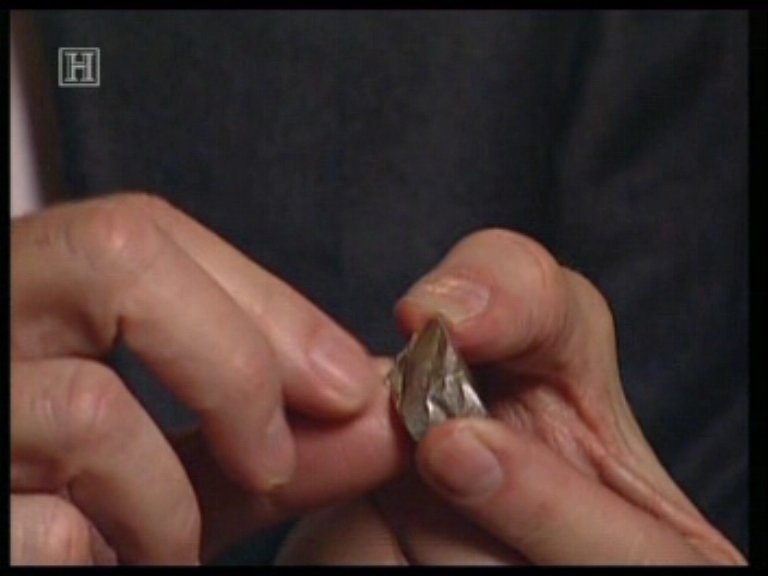 The
metallic lump was tested at an aerospace laboratory in 1973, almost
immediately after being discovered and found to contain 95% pure aluminium
and 5% iron. Normally when an aluminium and iron alloy is formed, the
amount of iron generally amounts to less than one percent. Also, zinc is
usually found at the same time. No zinc was found in the Aurora artefact. The
metallic lump was tested at an aerospace laboratory in 1973, almost
immediately after being discovered and found to contain 95% pure aluminium
and 5% iron. Normally when an aluminium and iron alloy is formed, the
amount of iron generally amounts to less than one percent. Also, zinc is
usually found at the same time. No zinc was found in the Aurora artefact.
John Schuessler,
of the Mutual UFO Network (MUFON), next took the sample to the Anastas
Labs in Houston, Texas and the previous results were confirmed. Further
tests showed that the metal had been molten at some point and then cooled
on the ground.
Several pieces of
metal arrived on Dr Tom Gray’s desk at Kansas State University, allegedly
from the Aurora crash. One was a large, spoked object and the others were
small, dark, metallic strips. Dr Gray recognised the large object as a
part from a water pump, made from mundane materials.
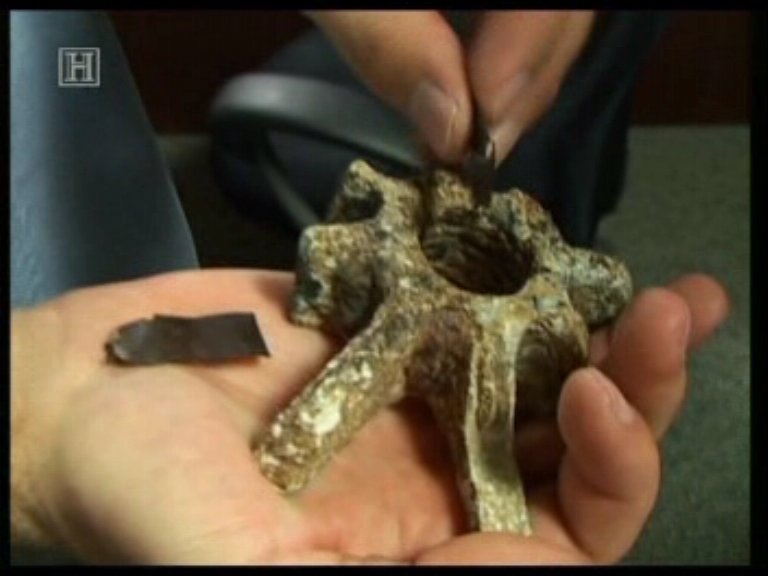 The
dark strips, however, were more perplexing. Dr Gray’s tests showed that
they were primarily iron, but they were unaffected by magnetism. He later
found out that iron/zinc alloys can be either magnetic or non-magnetic,
depending on how they are cooled. He explained this to the university
newspaper, but their story failed to mention this, focussing on the
‘abnormal’ nature of the metal strips. The
dark strips, however, were more perplexing. Dr Gray’s tests showed that
they were primarily iron, but they were unaffected by magnetism. He later
found out that iron/zinc alloys can be either magnetic or non-magnetic,
depending on how they are cooled. He explained this to the university
newspaper, but their story failed to mention this, focussing on the
‘abnormal’ nature of the metal strips.
Finding no more
pieces of debris, investigators turned their attention to the Aurora
cemetery. They began searching for evidence of the supposed grave site of
the deceased alien and were eventually told to look for an old, gnarled
oak tree with a beehive. They looked around for the small stone that had
been placed on the grave. It was said to have had an etching of the
‘airship’ on its surface. When they found the stone, metal detector
readings were identical to what they had recorded at the site where the
piece of silver debris had been found. This suggested that as well as the
alien corpse, some crash debris was also interred there.
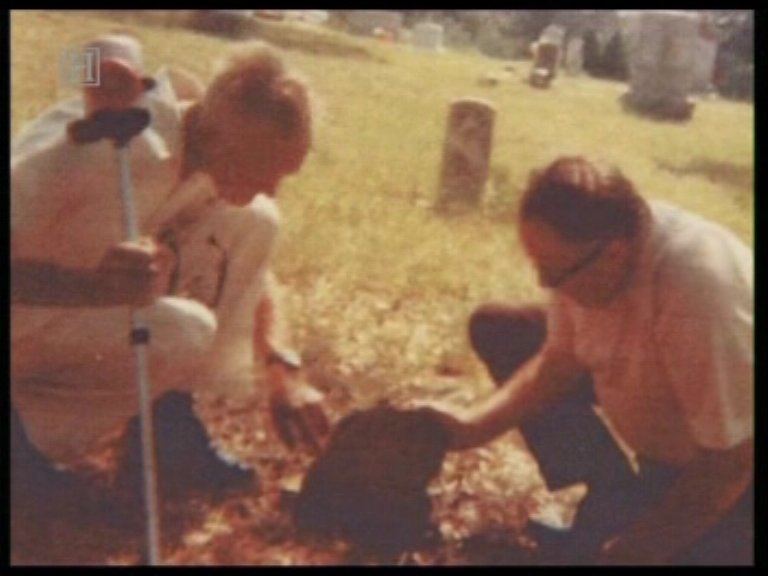 The
investigators asked for permission to exhume the contents of the grave,
but they were refused and eventually ejected from the site. When they were
finally abler to return to the cemetery, they found that the stone marker
was gone and a tube or cylinder had been driven into the grave and
whatever was down there had been literally sucked out of the ground. Metal
detector readings now came up negative. The
investigators asked for permission to exhume the contents of the grave,
but they were refused and eventually ejected from the site. When they were
finally abler to return to the cemetery, they found that the stone marker
was gone and a tube or cylinder had been driven into the grave and
whatever was down there had been literally sucked out of the ground. Metal
detector readings now came up negative.
With any physical
evidence now gone, sceptics began explaining away the entire episode as a
hoax. They claimed that the original story, by S.E. Haydon was a
concoction, a practical joke. Haydon was reputed to be a notorious
prankster, but Jim Marrs claimed that he found no evidence of Haydon ever
writing a joke story. Wallace Chariton found it odd, though, that if the
story was true, then why did Haydon not follow it up?
Barbara Brammer,
the mayor of Aurora, dug into local records and found that a series of
disasters befell the town in the years prior to the crash story. A
terrible fire claimed many lives and an outbreak of spotted fever
decimated the population. Times were bleak for Aurora. Then it was hoped
that the railroad would be built through the town, injecting it with
much-needed income, but the railroad never came and the spirits of the
townsfolk were crushed. Was the ‘airship’ crash story created to bring
fame to this dying, little town?
Whether true or
not, one thing both believers and sceptics can agree upon is that the
story of the Aurora ‘airship’ crash is a good one. While Aurora’s
population may have dwindled from over three thousand to a little fewer
than four hundred, it has become famous around the world in the UFO
community for this tale.
All that remains
in the town to mark the crash is a brief mention on a memorial stone in
the cemetery, erected in 1976.
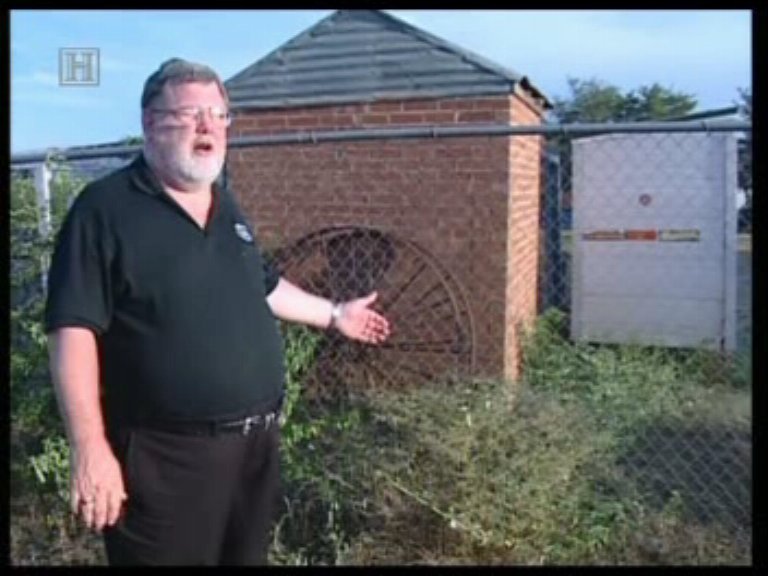 In
2005, Hayden Hewes was told of a bare patch of ground close to the old
well where the crash debris was said to have been dumped. Investigating
the claim, Hewes found the site and, indeed, there is a large patch of
ground where plants seem to have difficulty growing. It is next to the
well, but unfortunately, the well is now located in a fenced-off area on
private land with no access. Yet again, research is foiled. In
2005, Hayden Hewes was told of a bare patch of ground close to the old
well where the crash debris was said to have been dumped. Investigating
the claim, Hewes found the site and, indeed, there is a large patch of
ground where plants seem to have difficulty growing. It is next to the
well, but unfortunately, the well is now located in a fenced-off area on
private land with no access. Yet again, research is foiled.
If the owners of
the land ever allowed the well to be searched, they could find themselves
holding possibly the most important discovery of modern times.
UFO Files
again has brought into focus another important case that might well have
lingered in myth forever. It also shows that UFOs are not the preserve of
the late twentieth century and that sightings and incidents have come to
us from down through the ages.
The next episode
of UFO Files will focus on ‘Russia’s Roswell’, at the top-secret
Kapustin Yar military base, where UFOs and aliens are said to have been
taken for almost fifty years after World War II. It seems that everywhere
in the world has its own Roswell!
The images used are the
property of the copyright holders and are only used here for review
purposes.
© Steve Johnson -
2006 |